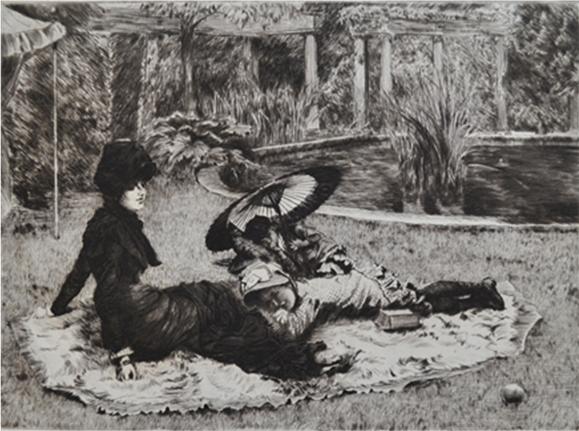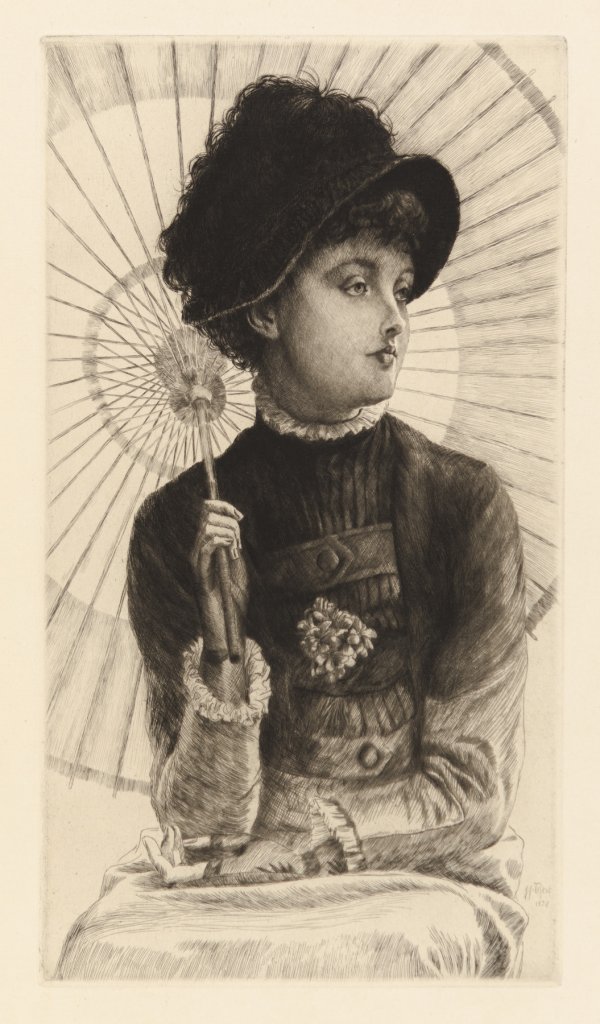Victorian Prints by James Tissot
Jacques Joseph Tissot was born in 1836 in the harbour city of Nantes to prosperous merchant parents. He was transferred to the Ecole des Beaux-Arts in Paris at a young age due to early recognition of his artistic abilities. He immersed himself in the art world and forged friendships with Whistler and Degas that would last a lifetime. His works quickly became popular and were acquired by museums including the Musée de Luxembourg and the Louvre.
His entrance into the Parisian Haute Monde came through this early achievement. At the height of Napoleon III’s Second Empire, Paris was experiencing an era of luxury and brilliance. With his keen eye and artistic prowess, Tissot, who was rapidly accepted by society, captured the people and events in his paintings and prints. These early pieces frequently show his interest in Japanese prints and have indications of the fashionable “Japonisme.” He was well-connected and maintained an opulent lifestyle through his portrait paintings and generous patronage.

Around 1864, when Tissot displayed a painting at the Royal Academy and his name began to appear in “Vanity Fair,” he began to flirt with British society. Tissot contributed regularly to “Vanity Fair” during the Franco-Prussian War of 1870, smuggling his caricatures into London from behind enemy lines. He was inspired by the conflict and produced a number of powerful etchings that vividly depict the horrors he saw. Tissot fled to England after Paris was overthrown by the new Republican government in 1875, and he was swiftly assimilated into London society. He settled at Saint John’s Wood not long after arriving, where he produced several of his most iconic prints.

Tissot met Mrs. Kathleen Newton, who would become his model, in 1876. She was thought to have been his great love and quickly became his inspiration. They avoided getting married because she was a divorcee with a child, and they took care to keep their relationship a secret from any guests or donors. However, Tissot frequently depicted her beautiful face, and some of his best-known and greatest etchings are portraits of her.
A few days after Mrs. Newton passed away from tuberculosis in Tissot’s home in 1882, he departed London for Paris. More than only the place changed. After the relocation, Tissot’s art underwent a spiritual and religious upheaval, while his typically exquisite images of French society underwent a sombre and melancholy transformation. He made extended trips around the Holy Land and spent his final years in France, where he worked and almost lived alone.
Tissot left behind a body of work that is treasured today for its technical brilliance as well as its capacity to inspire our imaginations. Both print enthusiasts and people drawn to the nostalgia of a long-ago era are continually impressed by the lavishness of the printing and the appeal of the topics.
